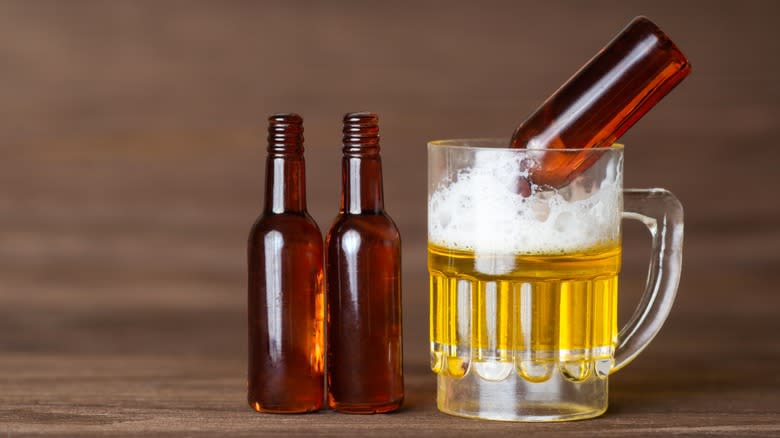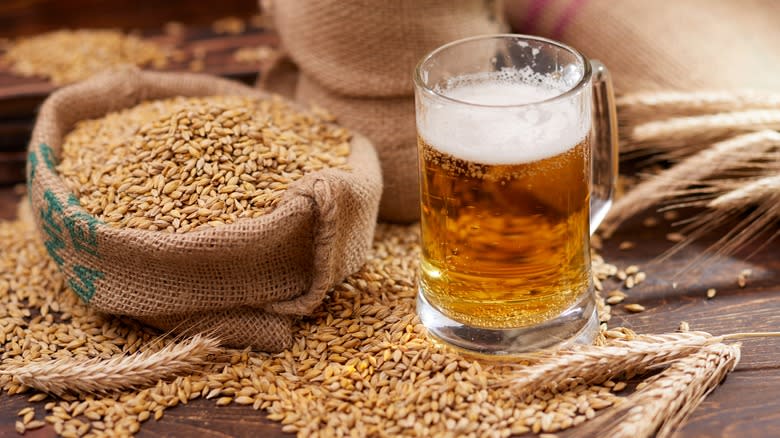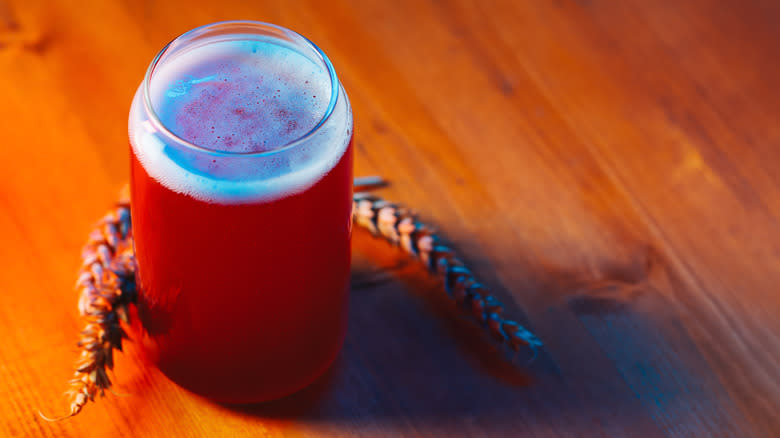The Reason Your Brand New Beer Tastes Stale

Beer is one of the world's favorite refreshing adult beverages, and you can find the drink made with pretty much every flavor or grain imaginable, from wheat to barley to rice. But there's one element that many beer makers and drinkers dread more than any other if it enters unexpectedly, and that's oxygen. Depending on the circumstances, oxygen can function as a balm for -- or an enemy of -- your favorite foods and beverages, and beer is no exception.
While some beers benefit from careful, controlled oxidization (like lambics and slowly-aged barley wines), oxygen exposure is often considered the kiss of death by brewers, as it leads directly to that stale taste nobody wants -- even in beer you've just purchased. Whether you describe it as "wet cardboard," "leather," or some other colorful descriptor, oxygen is usually why the drink tastes stale. The tricky part is that brewers don't just have to watch out for it at one point during the process: Oxidation can show up at any time from brewing to packaging.
Read more: 10 Of The Healthiest Beers You Can Drink
Stale Beer From The Store Was Most Likely Oxidized During Bottling

While oxygen is vital to activating the yeast during beer making, it's virtually impossible to avoid too much exposure to the gas during the entire process, as brewers aren't preparing it in the cold, lifeless vacuum of space. The key is controlling it because the more oxidized a beer becomes, the more likely it'll taste stale. And, while oxidation can show up at any time, caused by things like too much stirring of the mash or not enough splashing of the wort while it's being recirculated, the biggest issue is if the exposure occurs while beer is being packaged into bottles or cans. Breweries are more likely to catch it earlier in the process, so most beer that's stale directly from store shelves likely hit oxidation during bottling.
How you store beer also has a significant effect on this process, though. Oxidation increases as temperature goes up, meaning your beer will go bad faster if stored at room temperature -- or worse, in the heat. Refrigerated beer isn't just refreshing, it's actually fresher.
There Are Rare Times When Oxygen Is Helpful To Beer

There are, however, a couple of instances where too much oxygen does actually help in brewing. Chief among these is that oxygen is the key to providing the flavor of lambic beers. There's a particular strain of yeast known as Brettanomyces -- responsible for beers like lambics and Flanders red ales -- that converts ethanol and sugars into acetic acid when exposed to oxygen. Instead of creating a stale taste, this results in the strong taste lambic beer is known for. This takes time to reach its full effect, though, which is why, unlike most beers, lambics can be aged for up to three years.
Still, this is the exception rather than the rule, and oxygen typically harms rather than helps during brewing. If you're stuck with a six-pack of skunky or stale beer, though, take heart that it could've been a lot worse. If it had instead continued to ferment after bottling, it could've fully detonated, like Trader Joe's ginger beer once did.
Read the original article on Daily Meal

 Yahoo Sport
Yahoo Sport 




































































